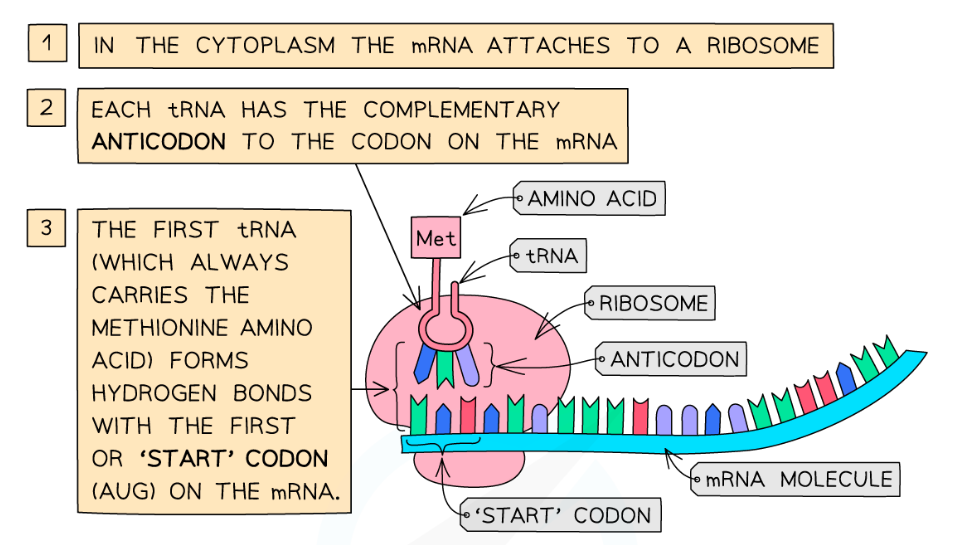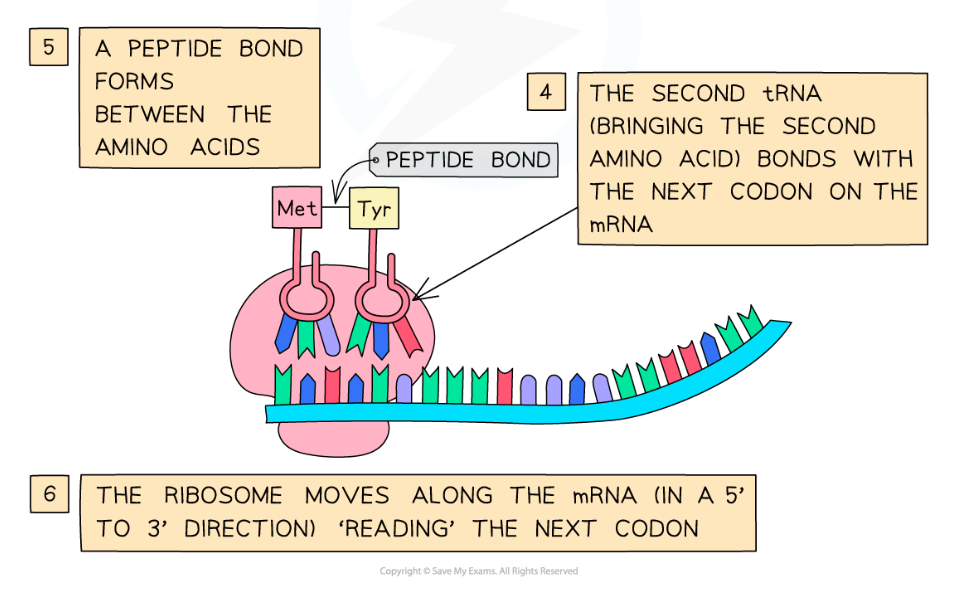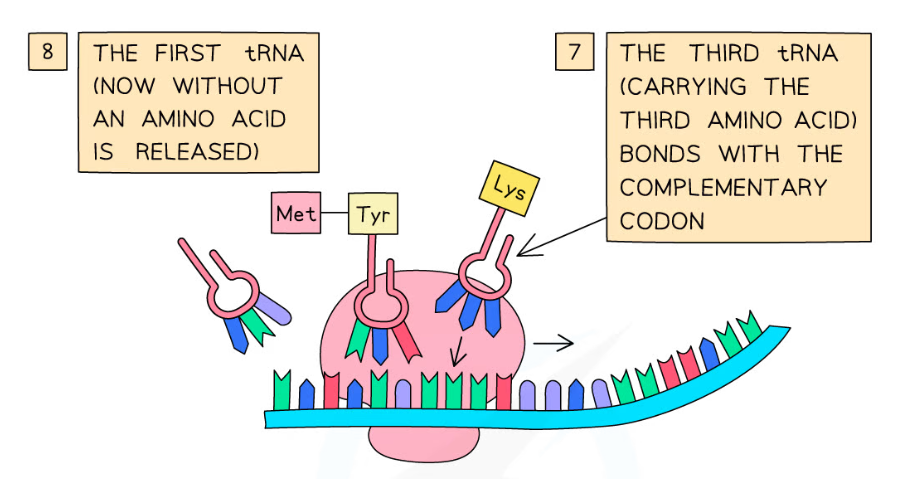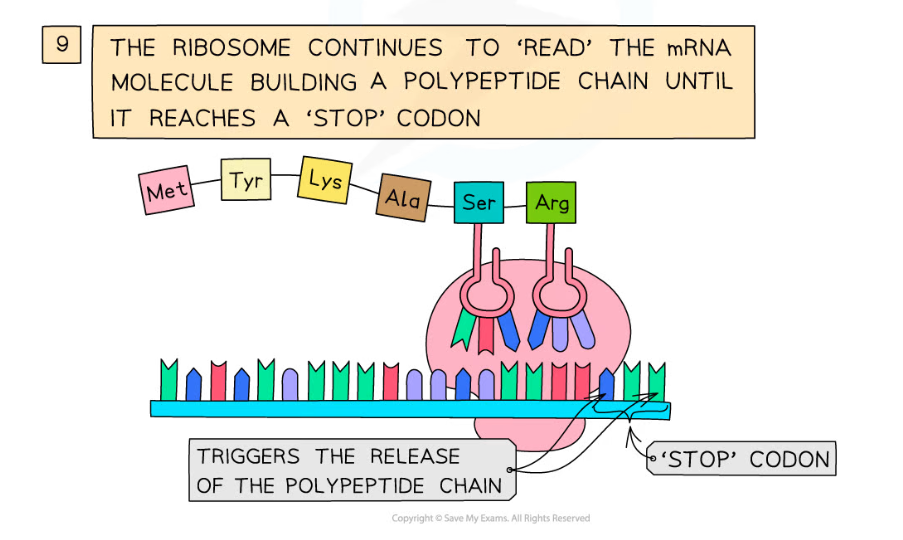- 翰林提供学术活动、国际课程、科研项目一站式留学背景提升服务!
- 400 888 0080
Edexcel A (SNAB) A Level Biology:复习笔记2.3.2 Translation
Translation
- Translation occurs in the cytoplasm of the cell
- After leaving the nucleus via a nuclear pore, the mRNA molecule attaches to a ribosome
- In the cytoplasm there are free molecules of tRNA (transfer RNA)
- tRNA is a single stranded molecule of RNA that folds into a clover-like structre
- tRNA molecules have a triplet of unpaired bases at one end, known as the anticodon, and a region at the other end where a specific amino acid can attach
- There are about 20 different tRNA molecules, each with a specific anticodon and specific amino acid binding site
- The tRNA molecules bind with their specific amino acids (also in the cytoplasm) and bring them to the mRNA molecule on the ribosome
- The triplet of bases (anticodon) on each tRNA molecule pairs with a complementary triplet on the mRNA molecule called the codon
- Near the beginning of the mRNA is a triplet of bases called the start codon (AUG)
- This is a signal to start off translation
- AUG codes for an amino acid called methionine
- Two tRNA molecules fit onto the ribosome at any one time, bringing the amino acid they are each carrying side by side
- A peptide bond is then formed, via a condensation reaction, between the two amino acids
- This process continues until a ‘stop’ codon on the mRNA molecule is reached – this acts as a signal for translation to stop and at this point the amino acid chain coded for by the mRNA molecule is complete
- The amino acid chain then forms the final polypeptide



 The process of translation
The process of translation
Exam Tip
Make sure you learn both stages of protein synthesis fully. Don’t forget – transcription occurs in the nucleus but translation occurs in the cytoplasm!
转载自savemyexams

早鸟钜惠!翰林2025暑期班课上线

最新发布
© 2025. All Rights Reserved. 沪ICP备2023009024号-1








